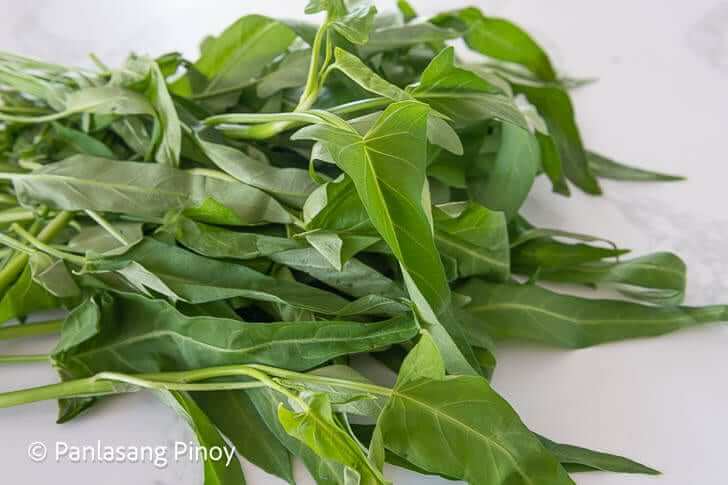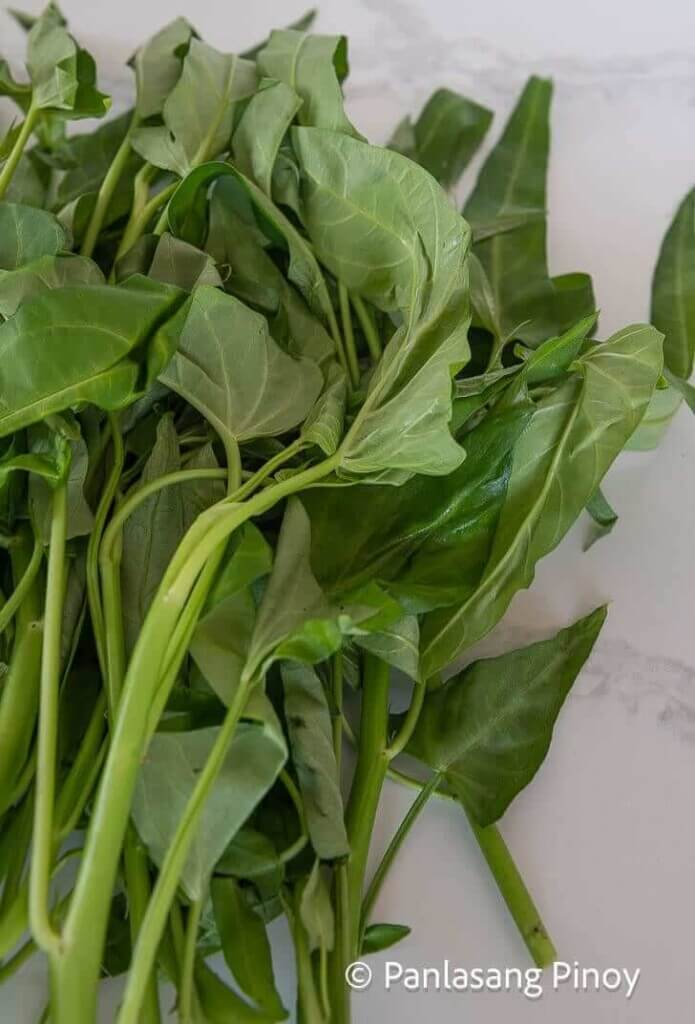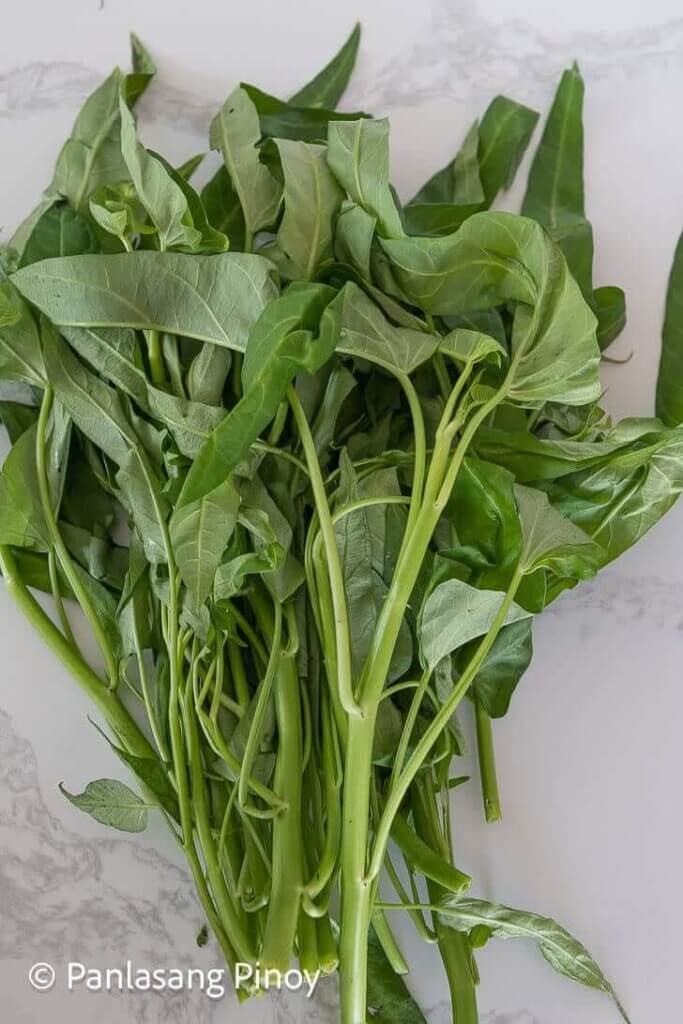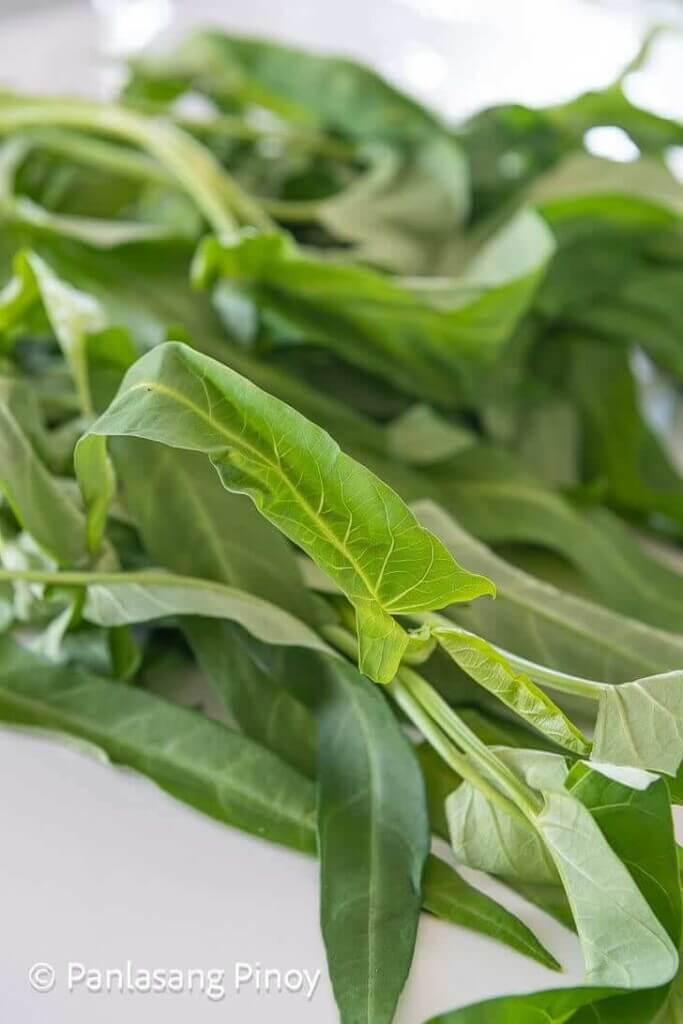What is Kangkong?
The Philippines is home to so many different vegetables . These has been an essential part of every Filipino’s healthy lifestyle. Whether you are young or old, it’s important to have your greens frequently to maintain a balanced diet. And one of these vegetables is none other than the humble kangkong.

Kangkong is a leafy green vegetable that has found its way into several East and Southeast Asian cuisines. Similar to spinach or watercress, it is an adaptable ingredient we often use in stir fries, or as the side dish to hearty, meaty dishes. Kangkong is a mild tasting dish, and its sweet, almost nutty flavor can be brought out by different marinades. When cooked properly, its leaves are tender and delicious, ready to be enjoyed in a variety of ways.
Kangkong is also known in other parts of the world as water spinach. Native to Southeast Asia, it’s undetermined whether kangkong stemmed from China or India. But it continues to grow in other countries beyond the region, like Australia, the Maldives, and New Guinea. It also thrives in select American states like California, Hawaii, Florida, and Texas.
You might be wondering what the difference between water spinach and plain old spinach is. Most of that difference lies in where each type of spinach grows.
Kangkong thrives best in water and in moist soil –– its name is water spinach, after all. You can breed and cultivate your own kangkong through its seeds or cuttings (stem or branches). But moisture is also one of the most key parts in growing water spinach of your own. Kangkong grows best in areas or soil that is constantly wet and moisturized. However, it is also necessary that it garners a lot of sunlight. Kangkong thrives best in humid and warm areas, so be sure that wherever you’re planting your water spinach reaches a lot of light. This is in stark contrast to regular spinach, which prefers colder climates. Even if it is partial to water, kangkong still needs the presence of the sun. Regular spinach, on the other hand, will grow sensitive to excessive amounts of sunlight.

Water spinach has a more consistent taste than regular spinach does. Its mild, sweet taste makes it stand out easily. The taste of spinach, meanwhile, depends on how well you have cooked it (sometimes, it can even end up a little bitter). Depending on how well you look after your kangkong, the first harvest should appear about a month or so after you planted them. From there, they should be ready to eat, and will make a delicious addition to your kitchen!
Health benefits of kangkong
Like any other delicious vegetable, Kangkong promises more than just an enjoyable meal –– it’s also deliciously nutritious!
Many in Asia (China, especially) have been using kangkong medicinally for hundreds of years due to its laxative-like properties. Kangkong is also an excellent source of Vitamin A, an essential vitamin for improving your vision and boosting your immune system. Its leaves, too, contain a lot of iron, which helps build and improve protein in red blood cells. Without enough iron in your system, this could lead to fatigue –– so it’s important that you get your regular intake through veggies like kangkong!
Other nutrients kangkong is rich in include calcium and magnesium. Both these nutrients are important in keeping our bones healthy and strong, and magnesium particularly helps in regulating muscle and nerve functions.
The combination of the rest of kangkong’s contents (manganese, copper, and zinc, and other vitamins) make kangkong effective for warding off illnesses. Kangkong can help prevent several cardiovascular diseases, osteoporosis, and several types of cancers. And even with its abundance of supplements, it is low in calories, which helps if you’re looking to lose weight.
But it’s not only in eating kangkong that we’re able to reap the benefits of this powerful vegetable.
Did you know that the juice you get from boiling kangkong actually helps soothe constipation? You can also mix that same juice with water, and use it as a cold compress to treat fevers. What’s more, by using kangkong buds as poultice or a medical dressing, you can even treat diseases like ringworm and athlete’s foot.
By being resourceful, kangkong can help you in a myriad of ways –– not just to soothe an empty stomach. With kangkong, not only are you getting a delicious vegetable, you’re also getting lots of benefits in one bite!
Kangkong cooking and storage tips
Something you always have to watch out for when cooking kangkong is how long you leave it cooking. It’s advisable to save it for last on the stove, as it cooks quite fast and runs the risk of being overcooked.
Some recipes don’t even call for cooking kangkong at all! Like lettuce leaves in salad, you can eat kangkong raw, so long as you have washed it properly.
True to its name, kangkong or water spinach thrives best in water. To ensure the freshness of your kangkong, make sure to store its stems in water, or keep it wrapped in damp paper towels. It might be a good idea to cook kangkong immediately after purchase. It is also worth noting that kangkong goes bad fairly quickly, so it is best to use it in your food, at most, two days after purchasing it. Not using it right away –– and not storing it well –– might lead to the yellowing of its leaves, which is an indication of its freshness.
Let’s get cookin’: Ways to cook your kangkong
Most kangkong dishes involve cooking the vegetable in condiments like soy sauce or oyster sauce. Its mild flavor balances out the saltiness of the sauces used. The addition of toasted garlic also brings out a smoky flavor to the dish, making it more complex.

Typically, you can find these types of kangkong dishes as a side to mains like sweet and sour pork or kung pao chicken. These are usually served with a steaming cup of rice, and make for the perfect bite!
Kangkong is such a flexible ingredient, evident by the many ways you can choose to cook it. Whether you choose to boil, blanch, or steam it, it always comes out deliciously. Here are some of the other popular ways you can enjoy kangkong, and those most commonly seen in Filipino cuisine:
- One of the other popular uses of kangkong in the Philippines is to use it in dishes and stews like sinigang. The shoots of kangkong are segmented and cooked along with the soup, soaking up the broth’s fantastic flavors.
- For those who love the savory flavor of adobo but want to opt for a more veggie-friendly option, adobong kangkong is for you! Made with the same sauce as the classic Filipino dish, this is just as enjoyable and lacks the heaviness of pork or chicken. You also have the option of making it saucier. This recipe works if you’re the type who loves to pour extra sauce over your rice for even more flavor.
- And if you still want the pork as part of the dish? Not a problem, either! An Ilonggo version of this dish, apan-apan, is just as easy to cook and enjoy.
- Are you a bagoong (shrimp paste) fan? If so, you might enjoy the simple dish kangkong with bagoong! This is as simple as blanching kangkong, cooking it with garlic and other sauces, and putting it on a plate with a bowl of shrimp or fish paste. You usually see this dish as an appetizer at several Asian restaurants, but making it is quick and easy, too.
- Binagoongang kangkong, on the other hand, is a dish you can make by already mixing the kangkong and bagoong together, as well as tossing in other ingredients. Another name for this dish is ensaladang kangkong. Tomatoes, onions, soy sauce, pepper, and even sili if you’re after that little kick will make this salad taste great! You can even serve it with crispy liempo (pork belly) or pork adobo.
- Kangkong is so versatile; you can even have it as a snack! If you love Japanese tempura, then you’ll love this twist that Filipinos have put on the vegetable called crispy kangkong! It is a healthy dish (kind of; you’re still frying the vegetable in a lot of oil, after all), but you may come across the problem of lack of flavor. If you pair it with a sauce like mayo or any Asian dipping sauce that packs a punch, it’s bound to be a hit at the dinner table!

But these are just examples within the Filipino cuisine! In other Asian countries like Thailand, Malaysia, Singapore and Indonesia, among others, kangkong has been incorporated into several of their own dishes. Typically stir-fried, kangkong can partner with so many dishes, ranging from cuttlefish to prawns to other vegetables and peanut dip.
Kangkong is such a versatile and valuable ingredient –– easy to grow, easy to cook, and easy to enjoy. With little to no cooking experience, you can enjoy these leafy greens with no problem at all, and serve it to your loved ones in several different ways. With every delicious bite, you get a meal packed with nutrition. Let us know how you love to enjoy your kangkong.
